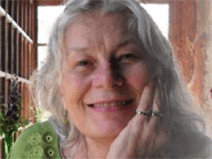The Challenge
As a child, Karen Larson didn’t believe that she was different from other kids. She thought that her uncontrolled shaking was part of who she was. Her grade school teachers and friends simply thought she was nervous or upset.
"I am living like I’m back in my twenties, except now I am even better, because the shaking is no longer a part of me." — Karen
When asked, Karen would simply reply, “I’m fine. I’m happy.”
As Karen got older, her shaking became more noticeable. Her mother would take her from doctor to doctor, who all diagnosed her shaking as irritability or nervousness.
“At this point I just started to put up with it because it was a part of my life,” says Karen. “I learned how to adjust my arms, so that I wouldn’t shake so bad.”
Schedule an Appointment or Ask a Question
By age 40, Karen’s shaking had become so problematic that her daughter recommended she see a specialist. Within minutes, the doctor diagnosed her with essential tremor, a disorder that affects parts of the brain that control body movement.
Karen was put on medication to control her symptoms, and to her surprise, her symptoms improved immediately. However, the medication only helped for a few years before the shaking returned worse than before. It got so bad that in 2011 she was forced to retire from her career as an art teacher.
“I love to paint, draw, and do anything with a brush but the shaking was affecting my ability to do so, and my ability to teach,” she says. “I couldn’t demonstrate how to paint correctly, and I was having difficulty helping the kids.”
The Path to UPMC
Karen had once again accepted the shaking as a part of her life. Then she read an article about a procedure performed at UPMC called deep brain stimulation (DBS) to control abnormal movements such as essential tremor. Karen wondered whether she could be a candidate, and immediately scheduled an appointment.
The medical team evaluated Karen to determine whether DBS would be right for her. A proven treatment for involuntary movements, DBS works by delivering electrical stimulation to targeted areas in the brain to block the neuronal signals that cause abnormal movement.
Once doctors confirmed that Karen would benefit from the procedure, her surgery was scheduled.
“I wasn’t scared about undergoing surgery,” says Karen. “It’s not simple, but I trusted everything I read and I was ready to see if I could finally control the shaking that I lived with all my life.”
The Solution
Karen’s procedure was performed while she was awake. During the awake DBS procedure, patients are scanned in an MRI suite prior to surgery. The surgical team uses these preoperative images as a road to guide the introduction of an electrode into the brain. The team is then able to communicate with the patient and assess brain functions to determine the best placement of the electrode.
During Karen’s procedure, the surgeon asked her to draw spirals on a piece of paper. At first, the spirals were jumpy and sloppy. But after placing the electrode, the spirals became smooth, and Karen’s shaking stopped.
“When I started drawing the spirals without shaking, I heard the team go ‘we got it,’ and I was so happy.”
After Karen healed from the initial implant procedure, a team of neurologists activated the pulse generator that was implanted under the skin below the collarbone.
“As soon as that was turned on, I immediately felt the difference and my shaking completely stopped,” says Karen. “I couldn’t believe it.”
The Results
Now, Karen is living life without the shaking she experienced for all those years.
"It really has turned my life around 180 degrees,” she says. “I am living like I’m back in my twenties, except now I am even better, because the shaking is no longer a part of me." — Karen
Karen has even gotten back into her art and surprised her surgeon with the print of a multi-media piece of art she created to depict the DBS treatment experience – a thank you for helping her get back her life.
Our patient stories profile a number of patients who have had minimally invasive brain surgery at UPMC. Although everyone's care experience is unique, we hope that sharing these stories will help other prospective patients and their families better understand these procedures and their potential benefits.
Karen's treatment and results may not be representative of all similar cases.

















